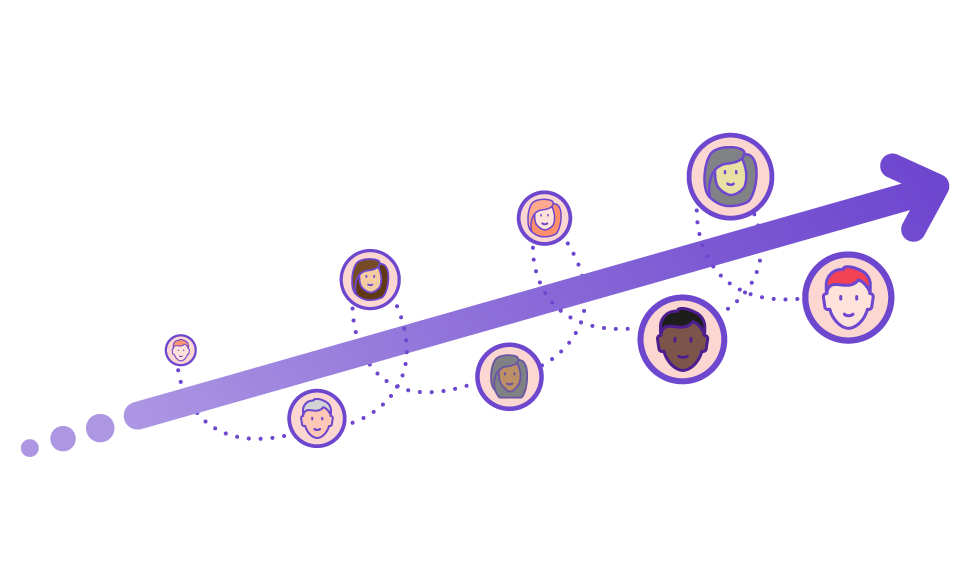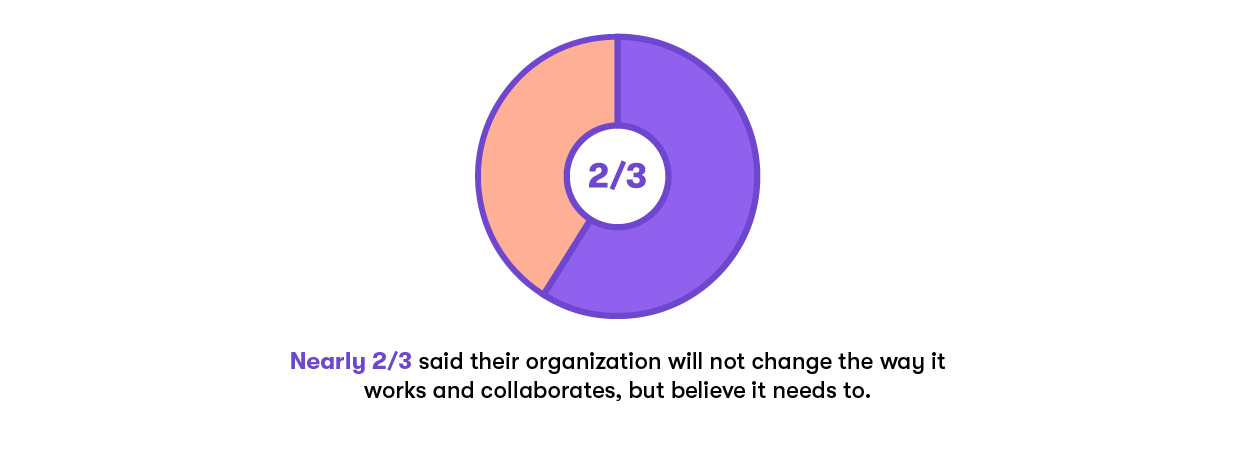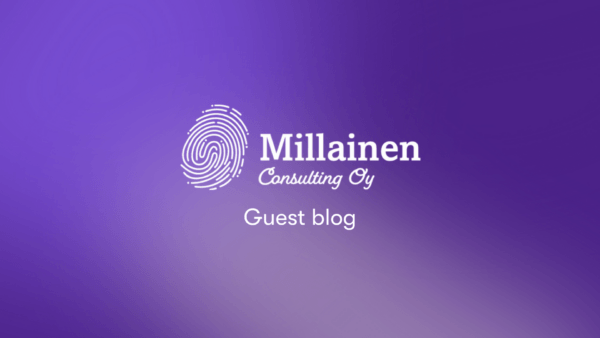
Why collaboration & improved ways of working are crucial for the future of work
The world of work is at a crossroads: Since the pandemic, leaders have focused on transforming the workplace, yet employees have become more detached from work.
At Howspace, we wanted to get to the heart of this issue and understand it from the perspective of collaboration.
To pinpoint how and where the state of collaboration is impacting workforce engagement and the future of work, we asked 3,000 office workers in Denmark, Germany, Finland, Norway, Sweden, the United Kingdom, and the United States for their views.
Based on our research, we’ve identified five key drivers to achieve collaborative impact:
- Collaboration
- Purpose
- Human Centricity
- Learning and Development
- Technology
In this post, we’ll focus on the first driver: collaboration. Learn about the current state of collaboration based on our original research, and find out why collaboration and improved ways of working are crucial for the future of work.
What’s the current state of collaboration?
Leaders have been focusing on structure rather than collaboration
Since the pandemic, employees feel transformation and change has focused more on structure and not enough on how people work together.

Collaboration—or how work actually gets done—has been less of a strategic priority. Only 1 in 5 workers state that their organization has reviewed its structure to create more collaboration around strategic decisions, according to the Howspace State of Collaboration report.
During the pandemic, leaders might have chosen to focus on structural changes to maintain some sense of control during an otherwise turbulent time. However, investments in structural enhancements are not supporting leaders in strategic decision making.
Workers feel their organization should change how it works, but don’t believe this will happen
76% of workers said they greatly value and enjoy collaboration. However, despite the belief that the workplace needs to change how it collaborates, they do not anticipate progress toward enhanced collaboration systems or practices. They’re losing faith in leaders’ ability to become more human centric and collaborative.

Modern work demands wide collaboration and a new model of collaborative leadership, where everyone is involved in making and shaping decisions that impact them. And leadership needs to adapt faster.
Why the future of work is collaborative & community-centric
Collaboration is the biggest untapped resource
People like working together and need it to be core to their life at work. For this reason, the focus on structure over collaboration is likely a contributing factor to workforce disengagement.
To improve employee engagement, loyalty, and satisfaction, collaboration must be a top organizational value and function as an everyday working practice. By tapping into collaborative ways of working, leaders can unlock employees’ potential at scale, and create tangible impact.
Empowered employees can create greater impact
To create real impact, organizations need to give employees their power back. When people feel that their thoughts and inputs are valued, they’ll be able to contribute to the organization in meaningful ways and become leaders themselves.
Rachel Happe, founder of Engaged Organizations and The Community Roundtable, explains: “If everyone is looking out for the needs of the organization and feels like they are empowered to do something, then you have more ears on the ground being responsive.”
Collaborative Impact is what will drive organizations’ future success—it’s the magic that happens when people meaningfully come together around a shared purpose to learn and collaborate.
Collaborative teams innovate faster
When you invite all employees to share their knowledge, experiences, and perspectives, you’ll get better ideas and make space for innovation.
However, many organizations suffer from CEO disease, meaning it’s hard for people in senior positions to get open and honest feedback from employees. Leaders have to be ready and willing to discuss difficult topics and ask questions—even if they might not like the answers. These tough conversations are often where the real growth happens.
People will be more comfortable sharing in a trusting environment where they feel psychologically safe—meaning they feel they won’t be punished or humiliated for sharing their thoughts.
By creating these open, safe spaces for dialogue, you’ll also prevent people from only sharing their honest opinions in corridor conversations, which you won’t be privy to.
Employee involvement reduces change resistance
As the world continues to transform in unexpected ways, organizations need to be ready to change alongside.
Guided collaboration is crucial for any type of organizational change. When you involve people in making decisions, there will be less change resistance. A Gartner report shows that by taking a people-centered approach to change, the rate of lasting success jumps up to 58%. And when people are truly invested in the change, it’s 30% more likely to stick.
Martin Aldergard, Senior Partner at ENPEO Consulting Co., Ltd., shares his view on collaboration: “I believe successful transformation and change is primarily a social process built on dialogue and co-creation. A process where people can create something new together, and feel the joy and excitement of collaboration. In this human-centric approach, leaders act more as facilitators of conversations, discovery, sense-making, and do less of ‘managing change’.”
Want to build your own workspace to create a sprint plan or a learning course? You can sign up now to access Howspace for free!
You might be interested in these as well
View all
Emotional Leadership in Change and Transformations at Different Organizational Levels
Discover the power of emotional leadership in navigating change at different organizational levels.

Gofore joins forces with Howspace as a new strategic partner
Gofore joins forces with Howspace as a new strategic partner to drive human-centric digital transformation.

Make Your Decision-Making More Inclusive and Effective
Participatory decision-making taps into the collective wisdom of your entire workforce. Here’s how to make more impactful decisions in your organization.